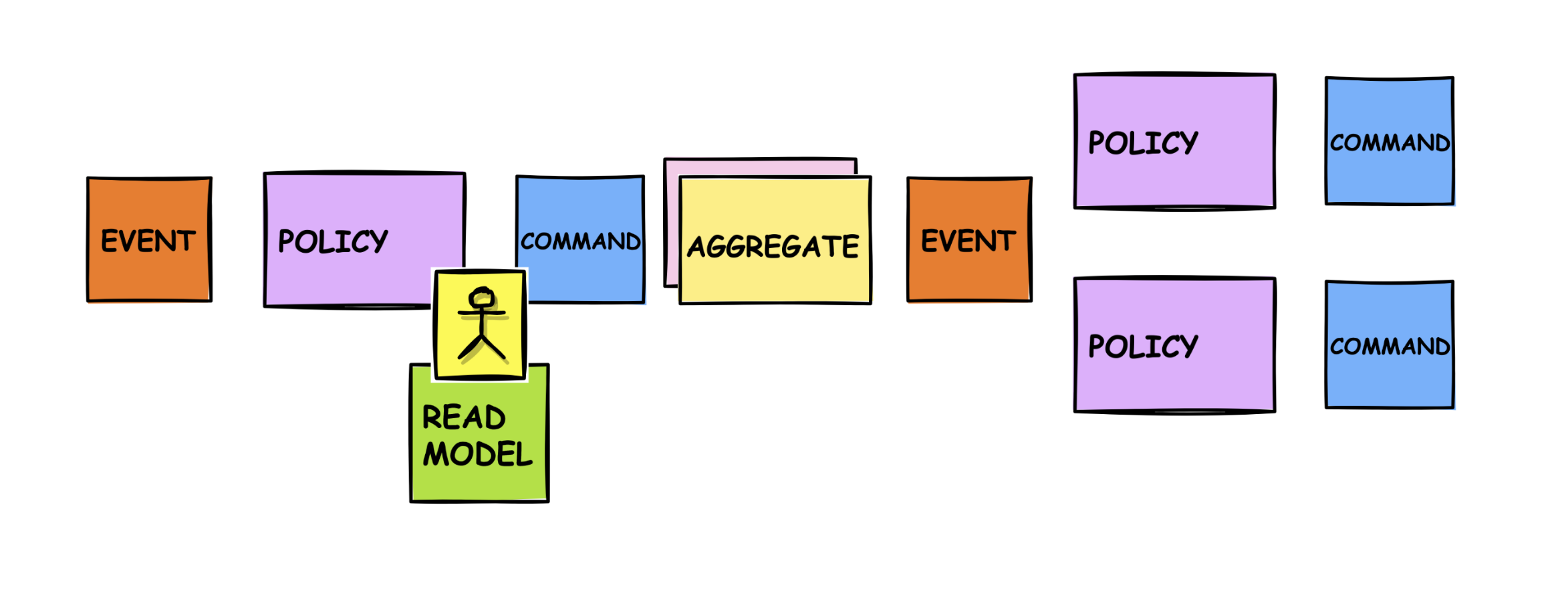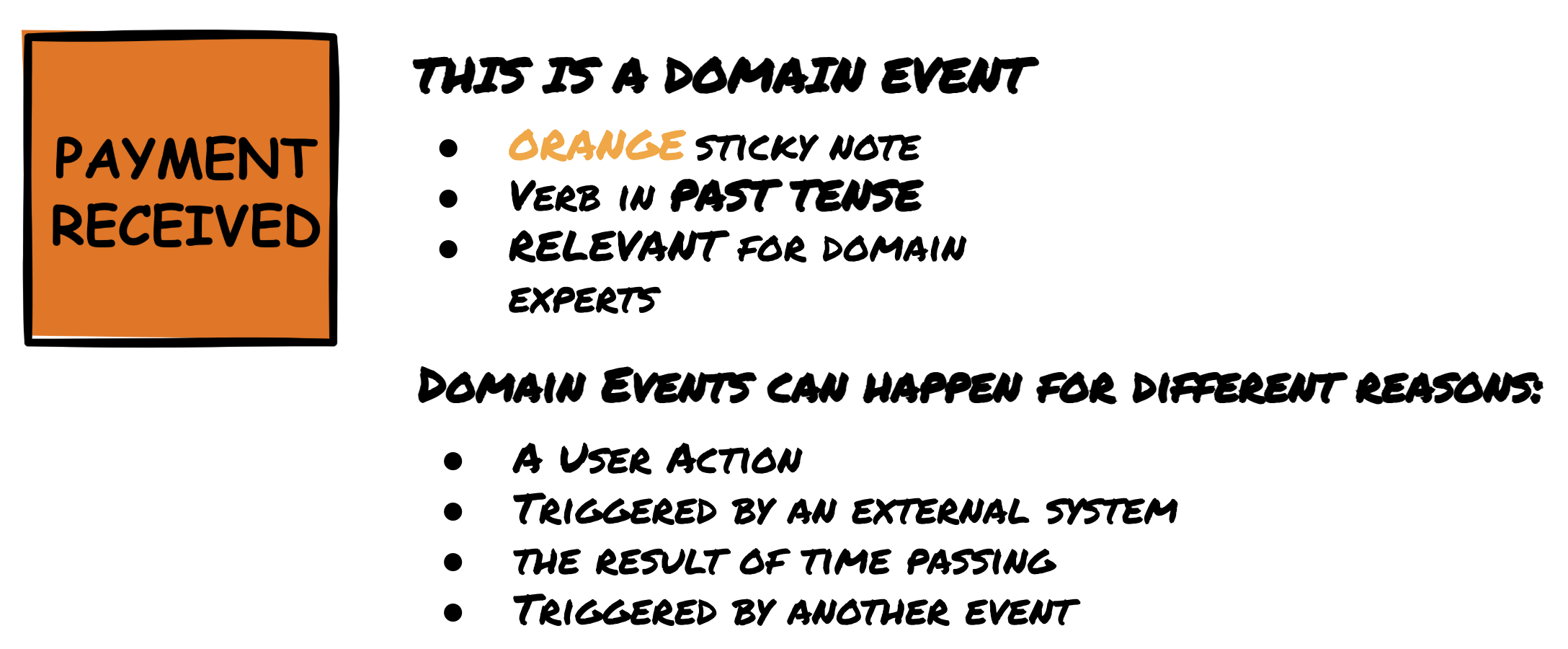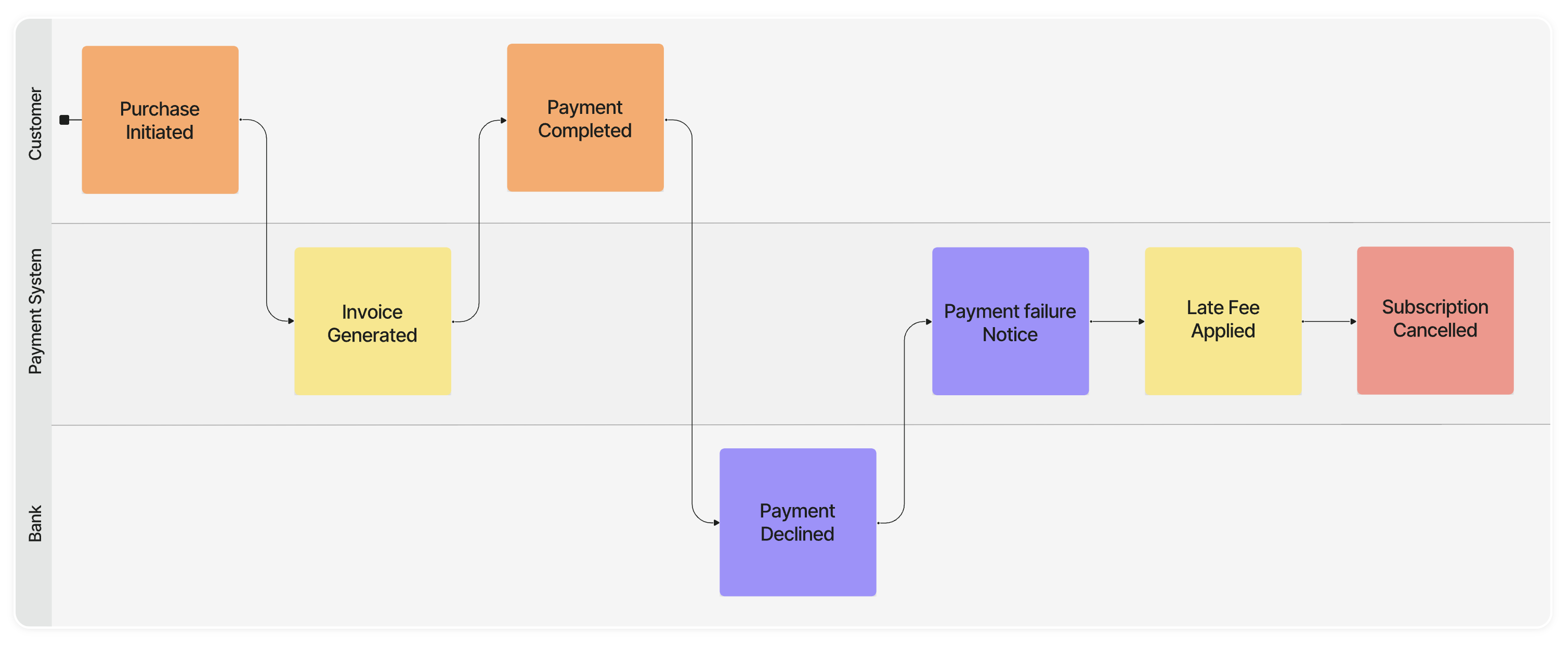

Experience from numerous software projects shows that achieving effective communication between domain experts and engineers is still a major challenge. Traditional methods, such as roundtable meetings or separate interviews, are often ineffective and limit business involvement. As a result, solutions are typically shaped by a limited understanding of business needs among technical teams, leading to systems that fall short of expectations. Event Storming is designed to bridge this communication gap between business and engineering, enabling full involvement from business stakeholders in the modeling process.
Another common problem in many organizations stems from working in silos. Here, we are not referring to the gap between business and engineering but rather to the gaps between different parts of the business itself. The issue is that employees typically understand their own department well but have little or no insight into what’s happening in other departments. This often leads to duplicate work, miscommunication, unnecessary delays, and many other forms of friction.
We are not suggesting that all silos are bad. Usually, they exist for good reasons, and we are not advocating for their removal. However, Event Storming can be a game-changer when it comes to aligning silos, fine-tuning how they work together, and helping all departments see the bigger picture. In just a few hours, Event Storming can uncover bottlenecks and misunderstandings that have been harming the organization for years. It can help large groups of people agree on shared challenges and reach consensus on priorities. The result? Often dramatically improved business performance, a sharper focus on the right problems, and system designs that support the way the business actually operates.
Event Storming is a workshop format that solves both the communication problem and the silo problem at once! It involves from a few up to 20 persons in the same room in front of a white board or using a digital tool such as Qlerify. Event Storming is based on a simple idea: the Domain Event. This is an event in a business process, described in past tense—like "order placed". It’s easy for everyone to understand, making it simple for business people to join the conversation. The organisation's representatives are called "Domain Experts" and with Event Storming you invite these domain experts and system developers to workshops where you explore business processes (the domain) together in a very time-efficient way.

In an Event Storming workshop, domain experts and developers work together to explore how a business really operates. Domain Events are mapped out and arranged on a timeline. Once the basic flow is clear, more details are added—like: who’s involved, what systems are used, what are the business rules, which are the main pain points and where are there opportunities and ideas for improvement.

The best part? Event Storming is flexible. You can adapt it to fit your goals and the people in the room.
Event Storming can be used in different ways, depending on your goals. It operates at three distinct levels:

By bringing together diverse perspectives in a dynamic workshop, Event Storming offers a multitude of advantages:
Qlerify has worked with Event Storming for a long time and has developed a unique, cloud-based Event Storming tool that supports the method. Click here to read more.
We also offer both public and customized courses in Event Storming in collaboration with our training partner, NFI. Here is more information about the course: https://nfi.se/kurs/event-storming
We also have extensive experience in facilitating workshops—both on-site in suitable venues and remotely via Zoom. Contact us if you're curious to learn more about Event Storming!
Read our post: Event Storming - The Complete Guide

